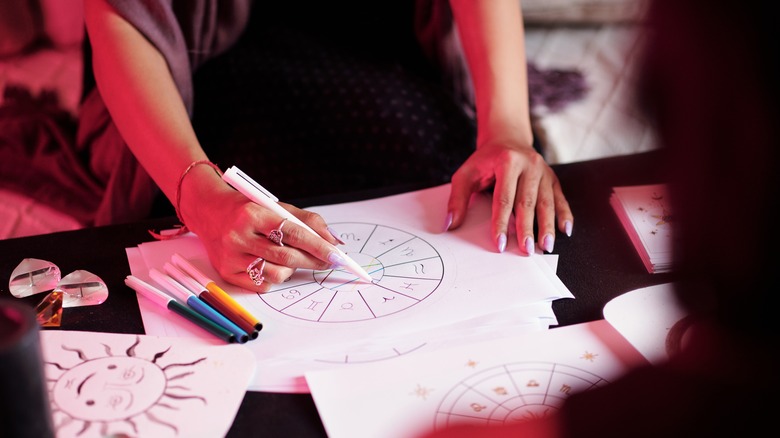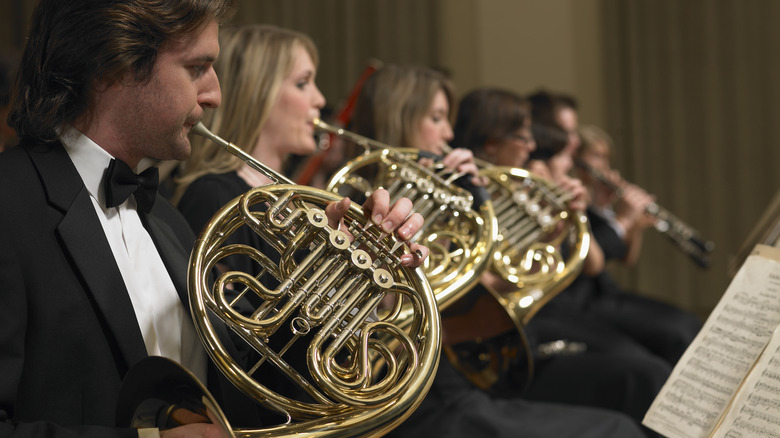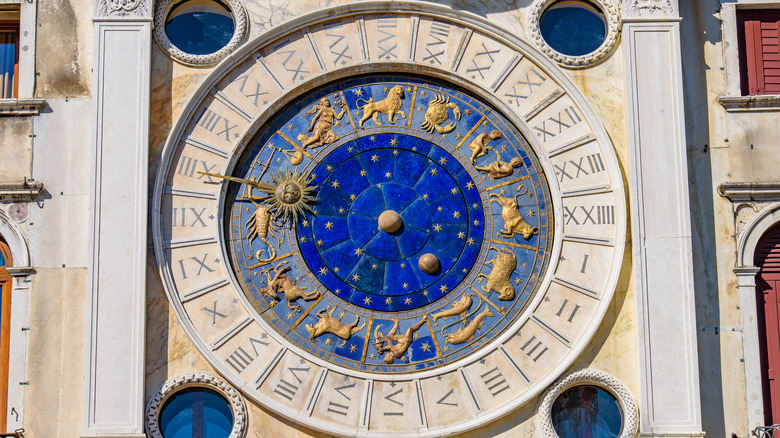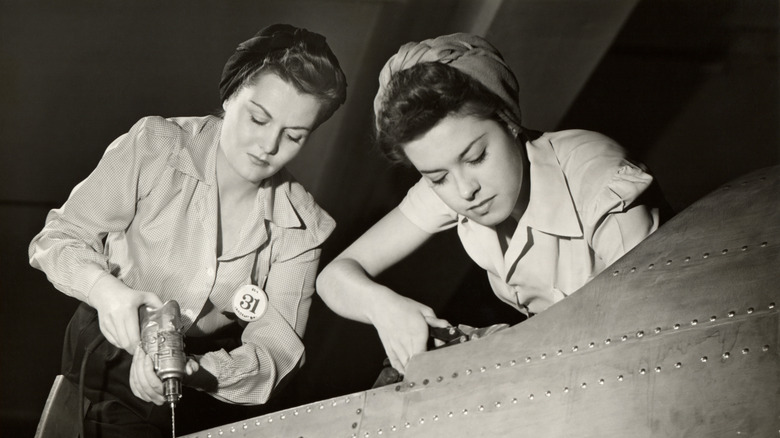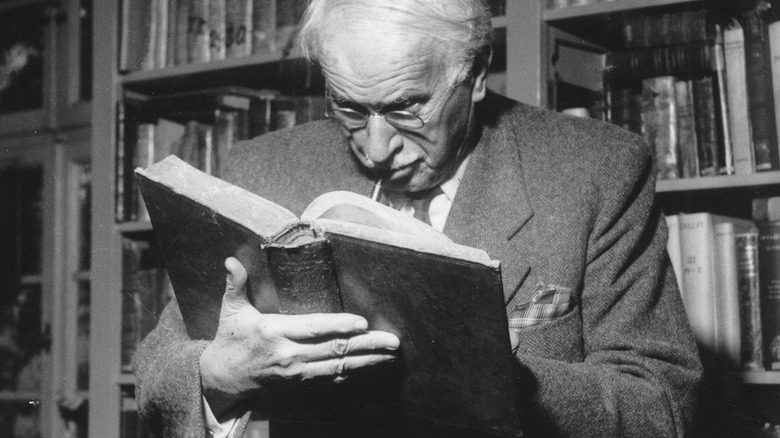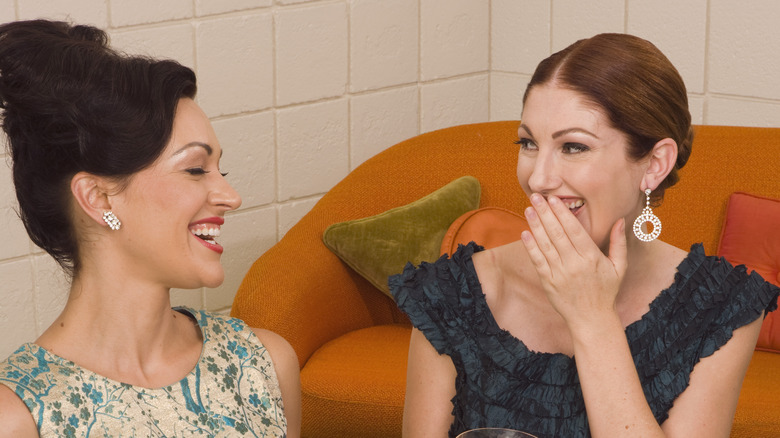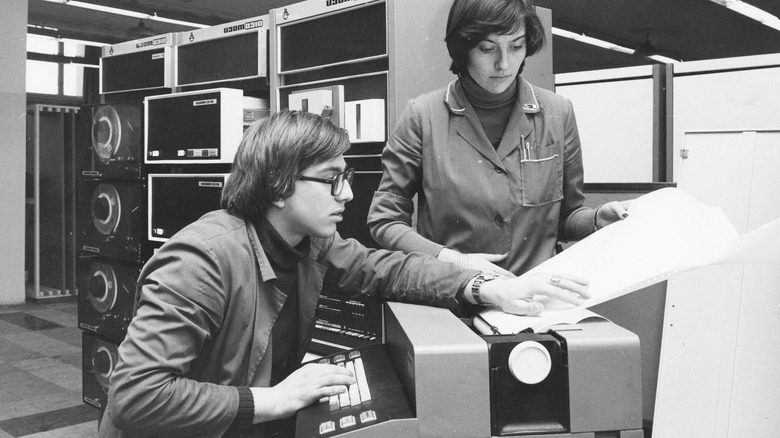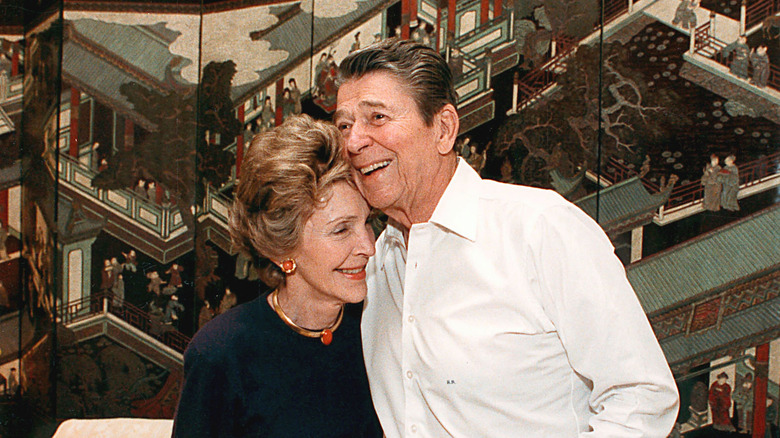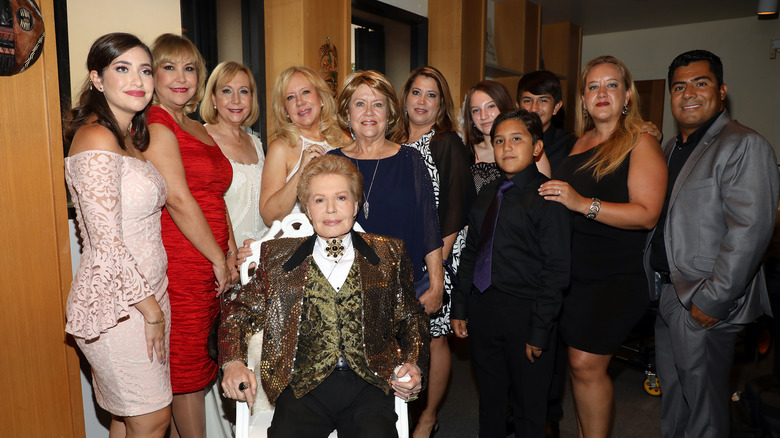100 Years Of Astrology
By the 1850s, the practice of astrology was no longer taken seriously by academics or intellectual circles. As a modern person, it's hard to imagine that prior to this time period, astrology was considered a legitimate science for thousands of years. Historical texts reveal that the terms and symbols of astrology were heavily intermixed with the study of sciences, mathematics, and even medicine.
The Victorian era — the turn of the 20th century — was a time of scientific marvels such as electricity and the steam engine. Industrialization brought prosperity, and America emerged as a global power. In the English-speaking world, a huge middle class was developing its own codes of ethics and codes of proper conduct. Although this was a technologically progressive time period, it was a mainly Christian society, and the morals of the day were quite conservative. Palm readers and astrologists were regarded with suspicion and distrust.
Perhaps it had something to do with corsets going out of style, or perhaps it was the cold, materialistic era. Whatever it was, people began to grow curious about the unknown. The average, working-class person had simply never heard of astrology as a concept since it was a topic that was never discussed in the media. However, by the 1920s, astrology was back on the scene as a topic of interest and curiosity. After its dormant years, astrology started to create buzz once again, beginning with the intellectual classes and then spreading to the masses.
1920-1925: Astrology at the symphony
In the '20s, astrology wasn't yet stereotyped as something only lonely, isolated women were interested in. Educated intellectuals and creatives were hungry to explore the topic. The world was becoming more and more secularized during this era, and, for some, it became evident that the Judeo-Christian worldview was not the entirety of the spiritual experience. Advancements in publication and distribution meant that more and more ideas could be shared and this included the ideas of the "new age." Today, the modern experience of astrology tends to be very text-based. The average person just reads a column or an article and doesn't question it too much. However, when it comes to astrology, there are multiple levels of interpretation available to those who seek it. It is a vast cosmological mythos that's rich in symbolic imagery. The zodiac is inherently tied to the calendar we use today, as astrology birthed astronomy: This is our connection to the Greco-Roman pagan worldview that dominated pre-Christian history.
Inspired not just by astrology but also that which is beyond — the forces that control the zodiac and its planetary rulers — Gustav Holst composed a grand suite of music known as "The Planets, Op. 32." By 1920, Holst's work was extremely popular and was performed regularly. Each section describes its corresponding planet and is a representation of the Roman god or goddess it's named after. Holst paints the epic narrative with his orchestration. Mars, the planet that rules Aries, is booming, dynamic, and thunderous. Uranus, the Magician, contains melodic, playful passages. No words are needed. Holst describes the indescribable and translates the astrological narrative through sound and rhythm.
1925-1930: Astrology at the modern art museum
It's normal for artists, writers, and musicians to romanticize the past and use it as a source of inspiration. During the Victorian era, the medieval period was romanticized by the pre-Raphaelite painters as well as by the artisans of the Arts and Crafts Movement. However, by the 1920s, that trend was over. The bohemian crowd needed something new, so they began to look even further back, this time toward the ancient Greco-Roman world.
For the artists, writers, and musicians working in the '20s and '30s, the halcyon represented a space of unrepressed freedom. The imagined world of the zodiac is a utopian world; it's a world of nude, frolicking nymphs and burly, muscular satyrs — a world of eternal twin constellations and never-ending Dionysian ambrosia.
Painted in the modern style of the '20s, Ernest Proctor produced the painting "Zodiac" in 1925. It depicts the entire astrological calendar in a single narrative painting. Here see here how astrological symbology has been reinterpreted by a new generation of mystics in the arts. This piece of art is one of the many examples we have of the growing interest, curiosity, and popularity of astrology among the educated intelligentsia and creators during that time.
1930-1939: Astrology in print
In 1930, astrology made its grand debut in print media. It is here that astrology would continue to thrive until modern times. The first newspaper to publish a column on astrology British newspaper The Sunday Express. The column was written by R.H. Naylor, a well-known astrologer of the time. Interestingly enough, Naylor's column did not evolve to look like a modern astrology column that included predictions for its readers until 1936.
Written with the intent of hooking readers, the first astrology article was actually about Princess Margaret for the celebration of her birthday. Being the sister of the late Queen Elizabeth II, Princess Margaret was an extremely popular royal in England. Naylor's article presented the princess's astrological birth chart and his predictions for her future. Shortly after that, Naylor published an article warning its readers of the danger that would soon befall a British aircraft. Soon after, the British aircraft R101 tragically crashed on its maiden flight. The uncanny prediction certainly influenced many to take astrology just a bit more seriously.
The 1930s were a turning point for astrology because this is when it became popular with not simply the cultural elite but by the masses. Through print publication, astrology became mainstream and discussed in common households everywhere.
1940-1945: Astrology as propaganda during World War 2
During World War II, astrology was used by both the Allies and Axis Powers as a means of propaganda. British magazines would regularly print predictions of the war outcome. This caused quite a bit of controversy, leading to the issue of whether it was ethical to allow these predictions to be printed being questioned in parliament. Ultimately, it was decided that there would be no ban on the publication of this type of material, according to the 1964 book "Astrology." If anything, World War II created an opportunity for astrology to become even more popular and widely read than ever.
During the 1940s, a famous astrologist named Louis de Wohl, who was also a British intelligence spymaster, was tasked with writing "black propaganda" in the form of his astrology. He wrote an astrology column for the purpose of gaining American sympathy for the British cause. In his popular astrology column, Whol emphasized the dangers of Hitler's regime and the Nazi threat. He was also used to feed phony astrological writing against the enemy with the intention of demoralizing the Nazis. He'd print fake star charts that predicted the downfall and death of high-ranking Nazi officials, per The Daily Beast. Due to the speculative nature of astrology, we can certainly see how it could be used as a means of manipulation.
1946-1959: Astrology and meaningful coincidence
Carl Jung was a Swiss psychiatrist and psychoanalysis who's been credited with being one of the founders of analytical psychology — of course, along with Sigmund Freud. A highly educated medical practitioner, Jung had an interest in astrology. He was especially interested in the symbolism of the zodiac and believed that they could add value to the psychological experience. He saw astrology as a way of examining the archetypal patterns that exist in the human mind.
In 1951, Jung published "Aion: Researches into the Phenomenology of the Self." In this work, Jung explores the relationship between astrology and the human conception of the Self. He believes that the center of human consciousness resides in this space. Then, in '54, he published "The Astrological Worldview," which includes essays and lectures that Jung gave on astrology, promoting it as a tool of self-exploration and urging his readers or listeners to examine the symbolic significance of the astrological system, per Astro.
Jung saw astrology as a useful tool for personal development. He thought that astrology could provide a framework for understanding the connection between the vastness of human experience and the role that archetypes play in personal development. Many of Jung's ideas still reverberate today, as he remains an influence on both modern astrologers and psychologists.
1960-1964: Astrology and cultural saturation
Astrology continued to gain huge popularity in the 1960s. This was partly because of the counterculture movement that had come about during this time. The anti-establishment counterculture embraced nontraditional forms of spirituality and philosophical ideas. Many people begin to see the zodiac as a way to gain further insights into themselves, their relationships, and their sense of purpose in the world.
What made astrology a unique form of spirituality was that it offered a personalized approach. By examining an individual's birth chart, astrology was able to examine the unique characteristics of that specific individual.
During the 1960s astrological imagery could be seen everywhere: on stamps, in illustration, and in graphic design. There were high culture examples as well as mass culture examples of astrological symbology everywhere. In 1963, the International Congress of Astro-Science was held, and astrology was discussed in a high-brow academic context as well as in less serious, accessible contexts, which is more proof that it was gaining even more traction.
1965-1969: Astrology in paperback
In 1968, Linda Goodman, an American astrologer, published "Linda Goodman's Sun Signs." Although there had been books written on astrology before, this was by far the most accessible book on the subject available at the time. Goodman wrote about astrology in a way that was easy to understand for a general audience, thus introducing a whole new generation and audience to astrology.
Astrology was no longer just for the cultural elite or the hippies of the counterculture movement. Goodman's book brought astrology into the American home and introduced astrology to a new audience of housewives and people across mainstream America.
"Linda Goodman's Sun Signs" is divided into 12 sections, each representing an individual sign of the zodiac. For each astrological sign, there are descriptions of that sign's personality, traits, strengths, and weaknesses. It's digestible for all readers and was written to include many relatable anecdotes to connect readers to Goodman's message. What's more, Goodman's book was the first on the topic of astrology to land a place on The New York Times bestseller list, although it is not possible to determine how long it stayed there since this information was not tracked at the time. Still, we know that it sold millions of copies and has been in print since its initial publication.
1970-1975: Astrology merges with psychology
Although astrology became more and more popular with a mainstream audience, it never completely severed its ties from the intellectual and academic communities. In the '70s, astrology continued to be a subject of interest on campuses around the country with the rediscovery of the writings of Carl Jung. Astrology becomes secularized with its shift away from predicting the future to that of psychology.
Today, psychoanalysis is no longer commonly practiced in the psychiatric space, although it was still commonly used in the 1970s. At that time, most psychological practitioners had trained under the psychoanalytic tradition which was heavily influenced by Sigmund Freud and Carl Jung. In some branches of Jungian psychology, therapists, and analysts believed that a patient's astrological birth chart had the potential to reveal information about that person's personality, behaviors, and relational attachments. It was theorized that examining the planetary placements and aspects of a patient's chart might give insights into unconscious or hidden fears and desires that might be driving that individual.
Although many of these psychological ideas have been dismissed today by mainstream medicine, it is still very interesting to consider how a subject like astrology has been considered credible and then discredited so many times over in modern human history. Although not a "hard science," astrology is still used today as an invaluable tool for self-discovery and self-help.
1976-1979: Astrology and the early computer
Astrological coding takes on a different meaning as Neil Franklin Michelson devotes himself to creating an algorithm software that'll generate astrological planetary data. As a systems engineer working for IBM in 1991, Michelson was able to use his professional skills for creating something that had never been done before: an astrology program. Although Michelson is deceased, his blog is still maintained on the website of the company he founded, Astro Communications Services. A humorous anecdote shared is that the computer Michaelson used in the '70s to create the first edition of the program he published was literally the size of a refrigerator!
People were very responsive to Michelson's work. He marketed his work by placing ads in astrology magazines. In fact, he described his "high-tech" services as individualized, computer-generated astrological charts. The demand was huge. The public's interest and the amount of work he received, enabled him to leave IBM and work at his company full-time. For the first time in history, the average person could access specialized information such as discreet planetary movements, as well as information that was previously only accessible in the most elite, hermetic institutions and groups.
1980-1989: Astrology in the White House
It's been rumored that Abraham Lincoln, Franklin, D Roosevelt, and Theodore Roosevelt all consulted astrologists, but we can't know for sure. However, there is one president who undoubtedly used the services of an astrologer.
During his presidency from 1980 to 1989, Ronald Reagan and his wife, Nancy Reagan, kept an astrologer on retainer. Her name was Joan Quigley, and she followed suit just as the Romanovs had Rasputin and the Reagans had Quigley. Apparently, there was a time when Reagan took Quigley's predictions pretty seriously: He would color-code the dates in his calendar that Quigley forecasted as "good" or "bad" (via The Paris Review). Unfortunately, the Reagans' relationship with Quigley grew complicated as her influence on Nancy also grew.
Naturally, the situation gets quite messy. The relationship between the Reagans and their former astrologer eventually became quite strained. The three involved have each written a memoir describing their individual grievances regarding the situation. In the 1990 memoir "What Does Joan Say? My Seven Years as White House Astrologer to Nancy and Ronald Reagan," one year after Reagan's last term, it is clear that Quigley felt unappreciated by the Reagans and is resentful that her important political work was not publicly acknowledged. Apparently, Nancy's reliance on astrology was a trauma response to the failed assassination attempt of her husband. Regardless, we can see how the influence of astrology has grown larger and larger.
1990-1999: Astrology during the dot com era
Although the proliferation of the internet has severely affected the world of print publication, the internet has not stopped the dissemination and popularity of astrology. In 1995, Susan Miller founded the website Astrology Zone, which quickly grew into one of the most popular astrology websites on the internet with a reach of 13 million readers a year. This lends itself perfectly to today, but we're not quite there yet.
Miller's popularity has led her to attain collaborations with high-end luxury brands like Louis Vuitton and Bloomingdales. Miller's work serves as a testimony to how far astrology has come. Not only has astrology completely saturated the mainstream, but its popularity also generates revenues for some of the most prestigious brands in the world. We can see how astrology is nothing to be scoffed at; it's popular all over the world and has reached the highest echelons of society and governance. But where can it go from here?
2000-2010: Astrology on TV
It's not uncommon to see astrology featured on television. Many television networks feature segments on astrology as part of their programming, especially on talk shows. Walter Mercado was perhaps one of the most well-known. He was a popular TV astrologer who became a household name in Latin America and the Spanish-speaking world. In the '70s, he began appearing on TV shows as a flamboyant, Liberace-esqe astrologer. In the 2000s, Mercado was regularly on "Primer Impacto" and "Univision's Despierta America," where he offered his unique vision on astrology.
Mercado was famous for his extravagant wardrobe, which featured glamorous capes and sparkly jewelry. Mercado used his platform to advocate for humanitarian causes such as HIV/AIDS awareness and disaster relief. He was also vocal about his support of the LGBTQ+ community. Although Mercado sadly passed in 2019, he remains an icon throughout the Spanish-speaking world, and his influence in the world of astrology remains.
2011-Present: astrology in the age of high-speed internet
In the age of high-speed Internet, astrology has experienced a surge in popularity, especially among Millenials and Gen Z. The internet has made astrology more accessible, as it allows for people to easily connect with astrologers, access their birth charts, and view astrological content from anywhere in the world. Today, it is possible for astrologers to build large followings on social media platforms, such as Twitter, Instagram, and TikTok, and one's dating chart is potentially the first thing discussed when meeting someone for the first time.
The popularity of wellness, mindfulness, and self-care has also led to a rise in astrology's popularity. Smartphones have also helped to spread astrology, quite literally, into the palms of our hands. Co—Star, Sanctuary, and the Pattern are just three well-known Astrology apps. Capitalizing on the popularity of her website, Susan Miller has also created an app called Astrology Zone. Astrology apps are popular because they can provide individualized predictions based on the user's birth charts and astrological data. Ultimately, astrology is everywhere today, and it's hard to even imagine how it could evolve from here — but we have no doubt that it will.
